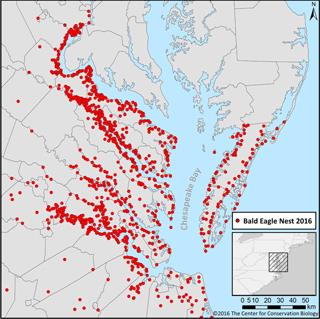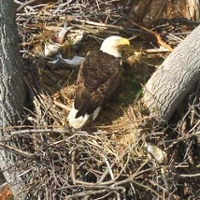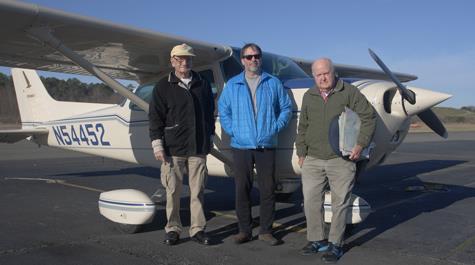On the nation's birthday, excellent news about the nation's bird
It was a banner year for Virginia’s bald eagles as well as for Virginia’s bald-eagle researchers.
The Center for Conservation Biology’s eagle survey team has logged a record 1,070 pairs of the national bird this year.
“This result continues the dramatic year-over-year recovery documented over the past 40 years,” Center Director Bryan Watts said. “The population had fallen to a low of 20 pairs by 1970.”
 A federal ban on DDT and similar pesticides allowed the eagles to repopulate the U.S. By 2007, Watts noted, the population in the Chesapeake region of Virginia reached 500 pairs.
A federal ban on DDT and similar pesticides allowed the eagles to repopulate the U.S. By 2007, Watts noted, the population in the Chesapeake region of Virginia reached 500 pairs.
The 2016 CCB survey mapped eagle mapped eagle territories within 57 counties and 12 independent cities. Watts said that the highest breeding densities continue to be in counties situated around major tributaries of the Chesapeake Bay, with highest numbers including 75 pairs in Westmoreland County, 73 pairs in King George County and 71 pairs in Essex County.
The survey team has recorded the comeback of the eagles over the decades. The 2016 census marked the 60th year of the annual eagle survey initiated by Jackson Abbott and volunteers of the Virginia Society of Ornithology.
Much of the survey has been done by the current members of the CCB team. In addition to the other milestones marked this year, the 2016 survey represents the 40th year of flying the census for Mitchell Byrd, professor of biology emeritus at William & Mary. It also was the 25th year of Watts’ tenure conducting the survey and the 25th year of Captain Fuzzzo Shermer piloting the survey.
 “Together, this young team has logged more than 3,500 hours of eagle survey flights, more than 24,000 nest checks and documented the production of more than 15,000 eaglets,” Watts said. “It has been one amazing ride.”
“Together, this young team has logged more than 3,500 hours of eagle survey flights, more than 24,000 nest checks and documented the production of more than 15,000 eaglets,” Watts said. “It has been one amazing ride.”
Watts explained the significance of the survey, which has produced one of the most significant serial data sets in the world. In addition to being an important population survey, the eagle census has produced an immense amount of ecological data on a population recovering in an increasingly human-dominated environment.
“The Virginia Bald Eagle Survey is a national treasure,” Watts said. “It has become one of the best records of what arguably has been the greatest conservation accomplishment in our nation’s history.”
Since 2009, results of the survey have been made available on CCB’s website via an interactive mapping portal, where users are able to view known nest locations throughout the state. Watts said that the web application receives more than 30,000 visits per year and has become a critical resource for land planners.
The 2016 survey was sponsored by the Virginia Department of Transportation, the National Park Service, Dominion, the U.S. Department of Defense, the U.S. Fish and Wildlife Service, the U.S. Army Corps of Engineers, and the Center for Conservation Biology. Research Associate Reese Lukei managed the ground survey in lower Tidewater, Research Biologist Bart Paxton assisted with aerial surveys on the upper Potomac and many observers throughout the state provided observations of nesting activity.
“We thank all of these organizations and great observers for their commitment to eagle conservation in Virginia,” Watts said.
The Center for Conservation Biology is a joint program of Virginia Commonwealth University and William & Mary.















